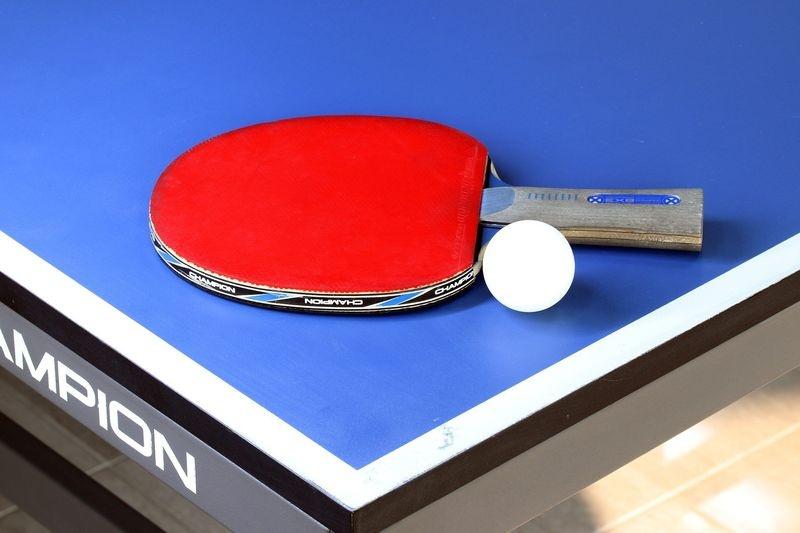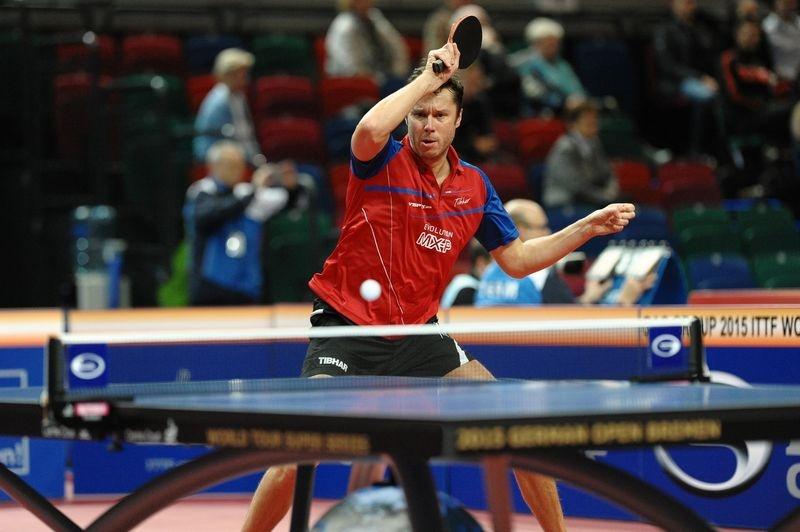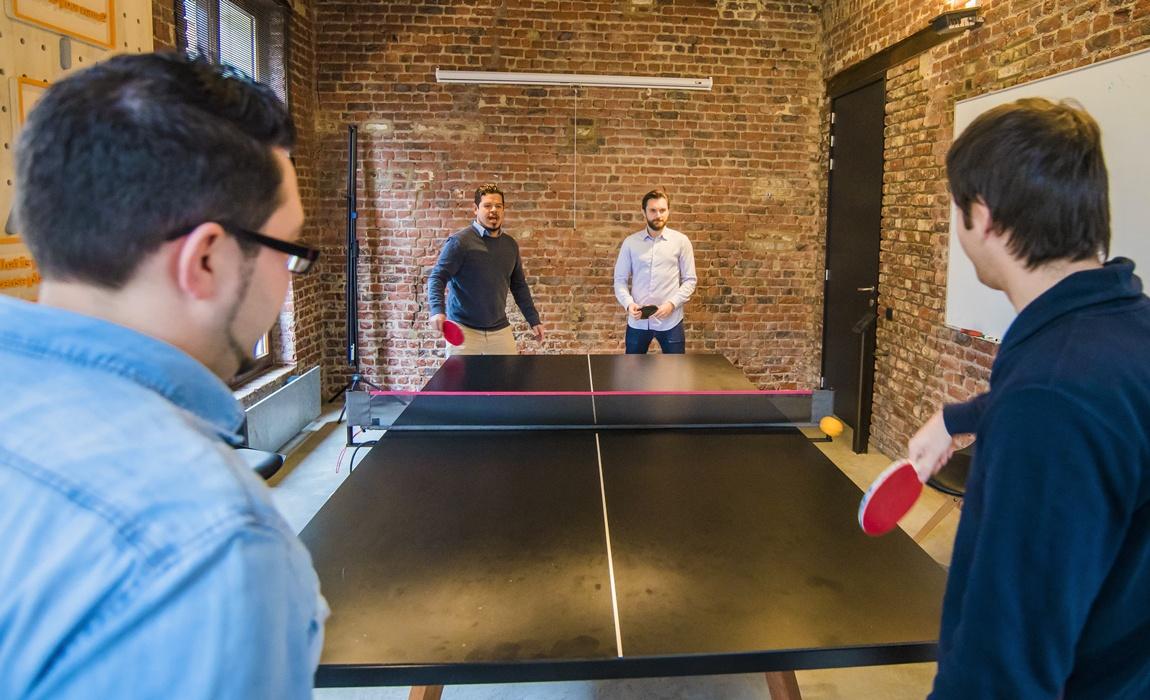Table tennis history is a subject that many people don't know much about. The history of table tennis goes back to the 1880s, when British officers played an indoor game called "wiff-waff." It became popular in England and spread across Europe before it was introduced in the United States during World War I. Table tennis as we know it today was developed from this sport, which has been around for over 100 years! In this blog post, you will learn all about history of table tennis - including how it came to be what we know now.
- Table tennis, originally known as Wiff Waff, evolved from a parlor game played with books and champagne corks in the late 19th century.
- The transition from Wiff Waff to modern table tennis involved standardized equipment and rules, eventually leading to the sport's global popularity.
- Ping Pong, a trademarked term in the early 1900s, initially competed with table tennis before the latter became the widely accepted name for the sport.
- The International Table Tennis Federation was established in 1926, formalizing the sport and setting the stage for international competitions.
- Today, table tennis is a fast-paced, Olympic sport enjoyed by millions around the world, with a rich history rooted in Victorian-era England.
- Comparing Wiff Waff and Ping Pong To Table Tennis:
- Wiff-Waff To Ping Pong: How Table Tennis Came To Be
- Ping Pong Bat, Paddle, or Racket?
- The Table Tennis Racket Evolution
- The Rise of Ping Pong
- Ping Pong vs Table Tennis Exploring Key Differences:
- Rival Associations Compete For Control: Ping Pong vs Table Tennis
- Birth of the International Table Tennis Federation (ITTF)
Comparing Wiff Waff and Ping Pong To Table Tennis:
This is a subject that can be very confusing for some folks since the definition of what Wiff Waff, Ping Pong, and Table Tennis are and how they are played are all very similar.
| Feature | Wiff Waff | Ping Pong | Table Tennis |
|---|---|---|---|
| Origin | Late 19th century, Victorian-era England | Early 20th century, trademarked by J. Jaques & Son | Early 20th century, evolving from Wiff Waff and Ping Pong |
| Equipment | Books as paddles, champagne cork as ball, table as net | Early versions used solid wooden paddles and a small ball | Standardized paddles with rubber surface, celluloid or plastic balls, and a net |
| Gameplay | Informal, played in parlors and drawing rooms | Informal, marketed as a family game | Formalized with standardized rules and competitive play |
| Naming | Name derived from the sound made by makeshift paddles | Trademarked name associated with recreational play | Accepted international name for the sport |
| Rules | No standardized rules | Early versions had simple, informal rules | Governed by the International Table Tennis Federation (ITTF) |
| Cultural Impact | Popular parlor game among the British upper class | Became a popular name for casual play worldwide | Recognized as a serious competitive sport and Olympic event |
| Evolution | Evolved into Ping Pong and later Table Tennis | Contributed to the development of modern Table Tennis | Established as the official and competitive version of the game |
As you can see, while the names of these three games are often used interchangeably, there are key differences and unique evolutionary paths from Wiff Waff to Ping Pong, and ultimately to the modern sport of Table Tennis.
Table tennis is one of the most interesting indoor games. There are estimates that 300 million people worldwide play table tennis to make it one of the most popular sports. You’ll find the sport in schools, social clubs and sports centers across the globe. If you’re a fan, you appreciate the immense benefits such as improving hand-eye coordination, burning calories, socializing, and improving reflexes among others.
But how did this sport come about? Is it the same as ping-pong? There are so many questions about the history of table tennis. This post covers some interesting facts about the sport to give you the best insight.
Wiff-Waff To Ping Pong: How Table Tennis Came To Be
In 1891, James Gibb opened up his own club where he had installed a table with long narrow boards on top: no net or posts were included yet so there was no clear winner. The game was often played by groups of players with rackets that had a short piece of string to help the ball over the net, which Gibb called "ping-pong."
This original game of "wiff-waff" used balls that would be unrecognizable today. Instead of the modern-style hollow plastic ball we know today, early table tennis players used balls that were made from rolled up string, rubber, and sometimes even a used champagne cork.
Another major contribution that James Gibb made to the sport was that he brought celluloid balls from the United States and popularized it as the standard ball until 2014 when the International Table Tennis Federation made the transition to plastic official.
In 1901, history's first table tennis tournament was held at London's Tudor Hall and attracted many participants who were keen on participating in what was viewed as an eccentric pastime.
After World War I ended, Alexander Graham Bell introduced a new form of ping pong - now known simply as 'table tennis' in America: it consisted of two paddles and one ball instead of teams playing against each other like in English wiff-waff (and later American volleyball), so he is considered history's first champion.
After World War II, the International Table Tennis Association was founded and table tennis became an Olympic sport in 1988. It is now played by over 300 million people worldwide which makes history's most popular sports game!
Do People Still Play Wiff Waff?
While Wiff Waff was the precursor to what we now know as table tennis, the original form of the game is no longer commonly played. Today, the name "Wiff Waff" is mostly a nostalgic reference to the early origins of table tennis, rather than an actively practiced sport.
The casual, makeshift nature of Wiff Waff, with its improvised equipment like books for paddles and champagne corks for balls, has been replaced by the standardized equipment and rules of modern table tennis. However, Wiff Waff is occasionally recreated at themed events or as a fun nod to the sport's quirky beginnings.

Ping Pong Bat, Paddle, or Racket?
Depending on what part of the world you might be in, the piece of wood and rubber that players hold in their hand and use to hit the ball also has different names. For instance, in some parts of Europe as well Commonwealth Countries including the UK, Australia, and New Zealand it is referred to as a bat.
Competitive players often prefer the term racket though since they see the sport as having evolved from tennis and many professionals see the term paddle as something cheap, lower class, and more the realm of people playing the sport in garages and basements.
The Table Tennis Racket Evolution
Throughout history, the table tennis paddle has evolved to deliver more efficiency and fun in the sport.
- The classic hard paddle era: This lasted from the 1920s to the 1950s and featured rubber bats with pimples, a 6.75 inches net, reusable tables. The hard bats and poor playing surfaces slowed the game.
- The sponge paddle era: This era marked the introduction of a wooden racket coated with thick foam sponge rubber.
- The speed glue era: This era saw advances in the game with the invention of speed glue and other features. Later ITTF adopted a two color rule for opposite sides of the rackets.
- Modern Table Tennis rackets have banned speed glue following the 2008 Olympics due to a variety of reasons including health hazards from inhalation of the vapors and the ITTF has now regulated what adhesives are allowed to be used to affix the rubber pieces to the wooden racket.
The Rise of Ping Pong
While ping pong might sound like a different game altogether, it was actually the more popular version of table tennis in the early days. This started with English firm J. Jacques and Sons which was making ping pong products and also popularizing the game. The name came from the sound made by the velum bats used by players.
Table tennis history is a hobby for some people, but it's also an essential to know what the difference between ping pong and table tennis.
Until 2011, Ping Pong and Table Tennis were essentially the same sport with different names. Now however they are defined as different sports completely.
One element that led to confusion here is that while the game is an international sport today, in the United States Parker Brothers actually bought the rights to the word Ping-Pong from John Jacques for the American market and prohibited other companies from using it to market or refer to their table tennis equipment as ping pong. Across the pond in England, "The Table Tennis Association" was formed and a few days later another group created "The Ping-Pong Association". The two merged in 1903 to become "The United Table Tennis and Ping-Pong Association". However, they would quickly drop "Ping-Pong" from the association's name.
In 2011, the separation between the two sports was made official - even though for most Americans in particular, they are interchangeable. In this year, the World Championship of Ping Pong was established as something different from the ITTFF (International Table Tennis Federation).

Ping Pong vs Table Tennis Exploring Key Differences:
Beyond what the actual answers are to how ping pong and table tennis differ, the biggest - though unofficial - answer is that the two sports are separated by the level of competitiveness among those who are playing. Generally speaking, more serious players think of it as table tennis while casual people in break rooms and basements simply enjoy a good natured game of ping pong.
Despite this, there are some significant differences that are important to note.
Points Counting To Win The Game - in Table Tennis, players must play to 11 with a difference of two points per player and the winner is the best of seven games, where as in Ping Pong they play to 15 and it is the best of three games. There are also a few other scoring differences as well.
Ping Pong and Table Tennis Equipment Differs Too - This is true in almost all aspects of the sport from the size of balls, rackets, and table. One major difference that impacts the play is that ping pong paddles do not have the knobby textured rubber surface. In table tennis, this is what allows players to have significantly more sophisticated play due to being able to spin the ball.
This enhanced racket surface in Table Tennis also results in a much more rapid pace of play compared to Ping Pong.
Fundamentally, the difference today between the two groups of players and enthusiasts is generally speaking that Ping Pong is the more fun, casual, and American-focused side of the sport. Table Tennis on the other hand is a professional sport that enjoys international prestige as part of the Olympics and larger tournaments around the world.
Additionally, with the exception of the United States and China, when referring to the sport generally - most people call it Table Tennis.
Some hardcore Table Tennis players take offense to it being called Ping Pong but we look forward to seeing how the two sports continue to evolve.
What makes things even more complicated is that most people play the game simply with house rules. This results in potentially playing a game using table tennis equipment but scoring it like ping pong or something completely unique to the venue.
As long as people are having fun, that's all that matters for most players!
Rival Associations Compete For Control: Ping Pong vs Table Tennis
With the popularity of table tennis growing, two rival associations emerged.
The Ping Pong Association and the Table Tennis Association attempted to control the popular sport from 1901. Branded ping pong products were popular in the market, but players could only use them if they agreed to recognize the brand. With time, the popularity of the sport reduced until the 1920s.
Birth of the International Table Tennis Federation (ITTF)
In 1926, a provisional International Table Tennis Federation (ITTF) came to be with Ivor Montagu as the first chairperson. ITTF formulated and passed the rules to govern the sport. Today, this is a worldwide organization that governs table tennis. ITTF currently includes 220 member associations.
Table tennis has an interesting history and this insight makes the sport more meaningful. With these facts, you’ll have a better appreciation of the beautiful sport.
Hey James Hills wants you to share this!

